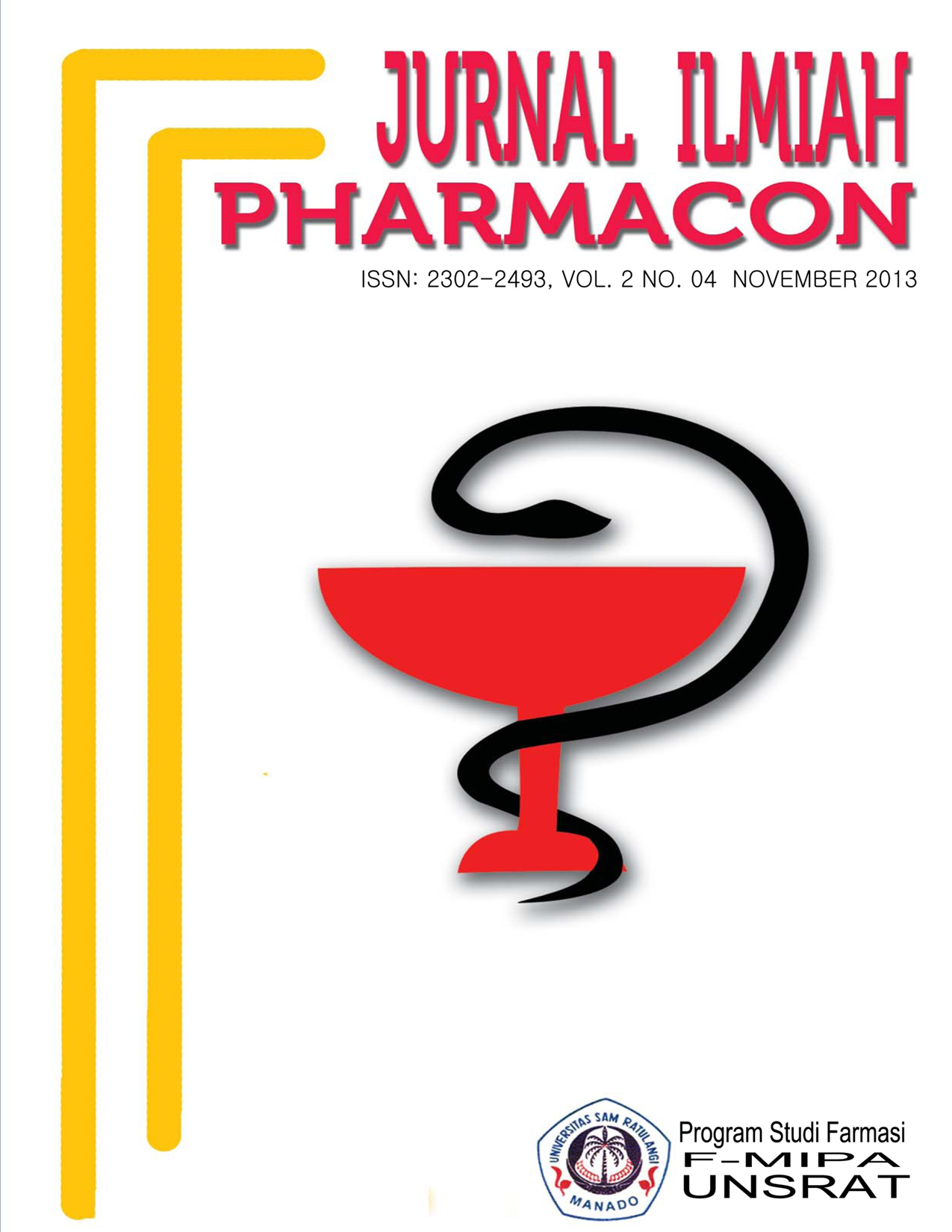UJI FITOKIMIA EKSTRAK KULIT BATANG Chisocheton sp. (C.DC) Harms YANG TUMBUH DI GUNUNG SOPUTAN SULAWESI UTARA
DOI:
https://doi.org/10.35799/pha.7.2018.21418Abstract
UJI FITOKIMIA EKSTRAK KULIT BATANG Chisocheton sp. (C.DC) Harms YANG TUMBUH DI GUNUNG SOPUTAN SULAWESI UTARA
Firnalisa M.Y Ahmad1), Dewa G. Katja1), Edi Suryanto1)
1)Jurusan Kimia FMIPA UNSRAT Manado, 95115
ABSTRACT
This study aims to determine the class of secondary metabolit phytochemical testing of each Chisocheton sp. (C.DC) Harms bark extract. The result of Chisocheton sp. (C.DC) Harms bark extract with n-hexan, ethyl acetate and methanol as solvent produced a thick extract of 7,193; 8,798; and 18,683 g. Phytochemical test results showed flavonoid, triterpenoid and tannin were the chemical compounds in the sample.
Keywords : Chisocheton sp. (C.DC) Harms, flavonoid, triterpenoid, tannin, and phytochemical
ABSTRAK
Penelitian ini bertujuan untuk mengetahui golongan senyawa metabolit sekunder melalui uji fitokimia setiap ekstrak kulit batang Chisocheton sp. C.DC Harms. Hasil ekstrak serbuk kulit batang Chisocheton sp. C.DC Harms dengan pelarut n-heksane, etil asetat dan metanol berturut-turut menghasilkan ekstrak kental sebesar 7,193; 8,798; dan 18,683 g. Hasil uji fitokimia menunjukkan adanya golongan senyawa flavonoid, triterpenoid dan tanin.
Kata Kunci : Chisocheton sp. C.DC Harms, flavonoid, triterpenoid, tanin, dan Fitokimia
Downloads
Published
How to Cite
Issue
Section
License
Authors who publish with this journal agree to the following terms:
- Authors retain copyright and grant the journal right of first publication with the work simultaneously licensed under a Creative Commons Attribution-NonCommercial 4.0 International License that allows others to share the work with an acknowledgement of the work's authorship and initial publication in this journal.
- Authors are permitted and encouraged to post their work online (e.g., in institutional repositories or on their website) prior to and during the submission process, as it can lead to productive exchanges, as well as earlier and greater citation of published work (See The Effect of Open Access)










